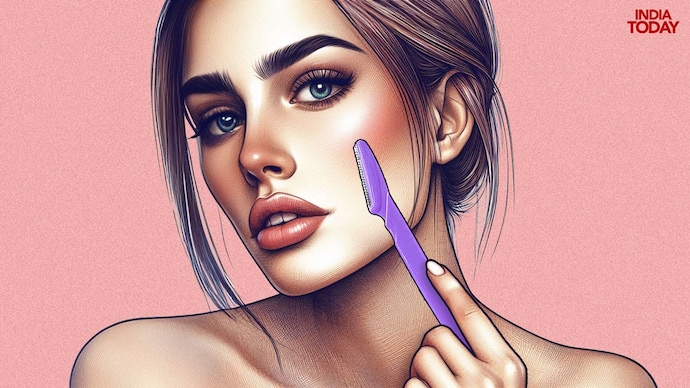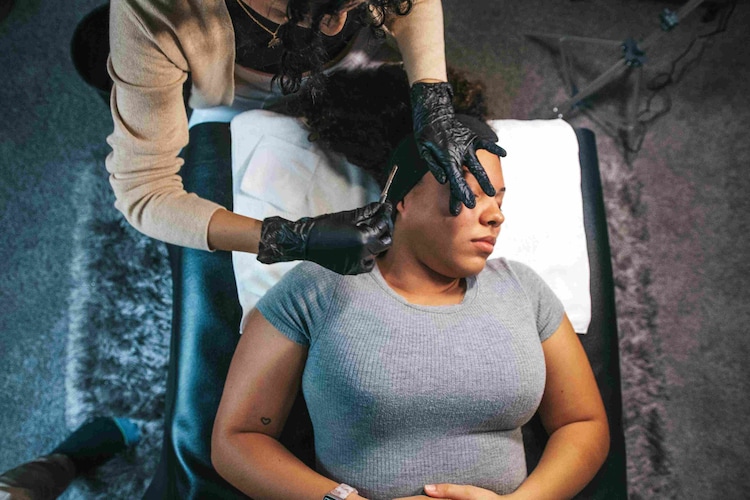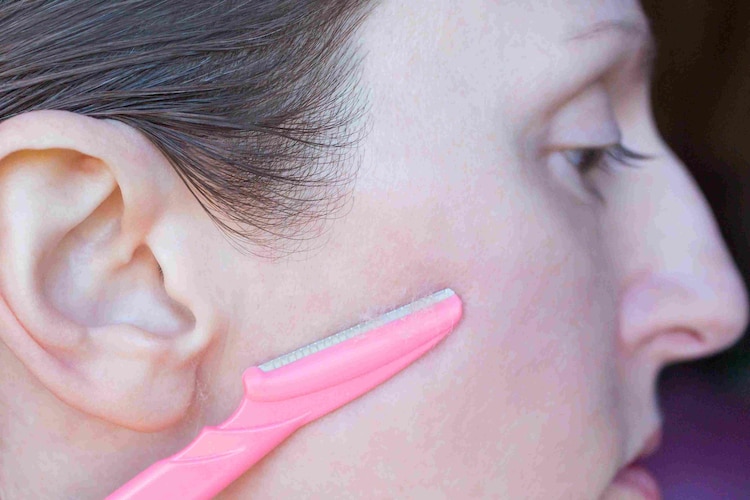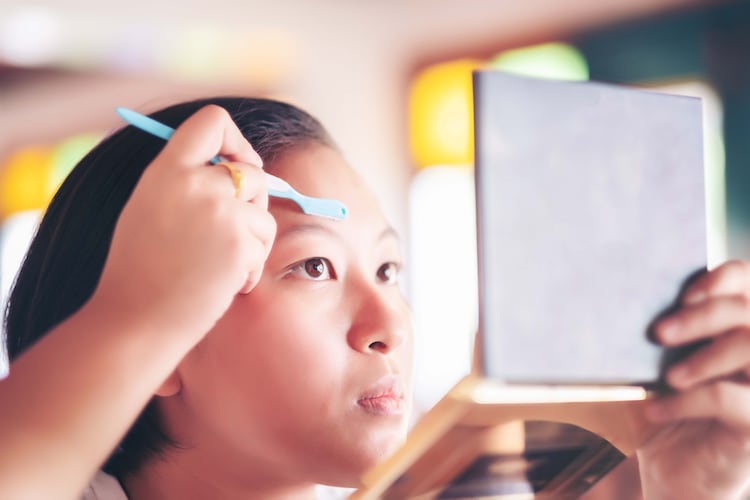Dermaplaning is a cosmetic procedure that uses a blade to gently exfoliate the top layer of the skin, removing dead skin cells and peach fuzz.

In short
- Facial hair removal through dermaplaning is gaining popularity
- Experts warn against using serrated blades commonly used for dermaplaning
- Certain skin conditions should completely avoid dermaplaning
If you are one of those people who are struggling with facial hair, then you need to take this problem in your own hands.using a blade) And removed those unwanted hairs.
Facial hair is ten times more serious if you have polycystic ovary syndrome (PCOS).
Nowadays, women are shaving their faces not only to remove facial hair but also to get clear skin. Known as dermaplaning, this procedure is currently in the news as it is easily available and can be done at home.
What is dermaplaning?
Dermaplaning is exactly what it sounds like – ‘planing’ the dermal layer of your face, and shaving or dermaplaning your face – if done correctly – does not harm your skin.
Dr. Shifa Yadav, a dermatologist at Artemis Hospitals, New Delhi, explains india today In the beauty industry, dermaplaning is a cosmetic procedure that uses a sterile surgical scalpel blade to gently exfoliate the top layer of the skin, removing dead skin cells and peach fuzz (thin, short, light-colored hairs that grow on the skin of the face).

If a dermatologist is doing dermaplaning, he or she will use a scalpel (a more professional blade), whereas people who are doing dermaplaning at home usually use blades readily available in the market.
Nowadays, you will find many face blades and razors in the market, priced between Rs 80 and Rs 500.
“The goal of dermaplaning is to achieve smooth, glowing skin. It can also improve the effectiveness of skincare products and makeup applications,” says Dr. Yadav.
By the wayIn case you’re wondering, face shaving and dermaplaning are two different things.
Dermaplaning involves using a sterile surgical scalpel to exfoliate the skin, removing dead skin cells and fine vellus hair (peach fuzz), resulting in a deeper exfoliation of the skin.
Shaving typically uses a razor to remove hair without targeting dead skin cells, primarily to remove hair rather than exfoliate the skin.
Aesthetician in viral video advises against using serrated blades
In a now-viral video that has over 3.4 million views, aesthetician Chantel said on Instagram that as an aesthetician, she doesn’t want people doing dermaplaning to use serrated blades.
According to him, these serrated blades cause more damage to the face than a normal blade or scalpel.
Watch the video here:
View this post on InstagramA post shared by CHANTEL | SKIN + BROWS | VISTA, CA (@chantel_soulskin)
The video received a lot of comments, as serrated blades are the most easily available (even in the Indian market).


Do experts agree?
We spoke to various experts and they all seemed to agree that serrated blades can wreak havoc on your skin — especially if you have extremely sensitive skin.
For instance, Dr. Neha Khurana, board-certified dermatologist and founder of House of Aesthetics, Delhi, says, “Of course, serrated blades have sharper teeth and may cause more cuts on the skin compared to a smooth blade.”

She says their “teeth” can penetrate the skin more deeply, causing more injuries and irregular wounds.
Dr. Khurana says, “Such wounds are more complicated to clean and stitch and have a higher risk of infection. Such blades also increase the risk of nerve damage and more pain. If there is any damage to the deeper components like muscles, tendons or ligaments, the functionality of that particular area may be affected.”
How to do dermaplaning correctly?
Meghna Maur, co-founder and medical head of Scusi Superclinic, says that dermaplaning can be done in four major steps.
1. prepCleanse and dry your face.
2. blade: Use a scalpel or smooth blade (We will explain in detail in a little while,
View this post on InstagramA post shared by BEAUTYREPUBLIC (@beautyrepublic1)
3. TechniqueHold the skin taut and use short, feathery strokes with the dermaplaning blade at a 45-degree angle.
- Move the blade upward against the direction of hair growth.
- Avoid going over the same area multiple times to avoid irritation.
4. Worry: Don’t forget to take care of your skin after dermaplaning. Wash, moisturize and apply sunscreen.
“If you are trying it for the first time, practice a patch test on a small area of your face to see the results. Never use a dermaplane on open wounds or acne to avoid skin irritation,” says Dr Nupur Jain, chief consultant dermatologist and founder of Gurgaon-based Skinzest.
What type of blade should you use for dermaplaning?
Selecting the appropriate blade is important when it comes to dermaplaning.
Dr. Khurana suggests that there are specific blades of size 10R and 10S available in medical stores, which can be used for dermaplaning.

“They are made of stainless steel and have a rounded edge, which reduces the chances of cuts. They are often sold pre-packaged and have single-use disposable blades, which are sterile and safe to use. Before each session of dermaplaning, choose a new sterile blade that is sharp enough to effectively exfoliate the skin,” says Dr. Khurana.
Who should avoid dermaplaning?
Dermaplaning is not for everyone. Dr Shifa Yadav says that people with active inflammatory skin conditions, such as cystic acne, should avoid dermaplaning as it can worsen inflammation and potentially spread bacteria.
Additionally, people with bleeding disorders or those using certain blood-thinning medications should consult a healthcare professional before undergoing dermaplaning to reduce the risk of bleeding.
She also says that people with skin conditions such as severe acne, eczema or psoriasis should also avoid shaving, as it can worsen these conditions or cause irritation.


